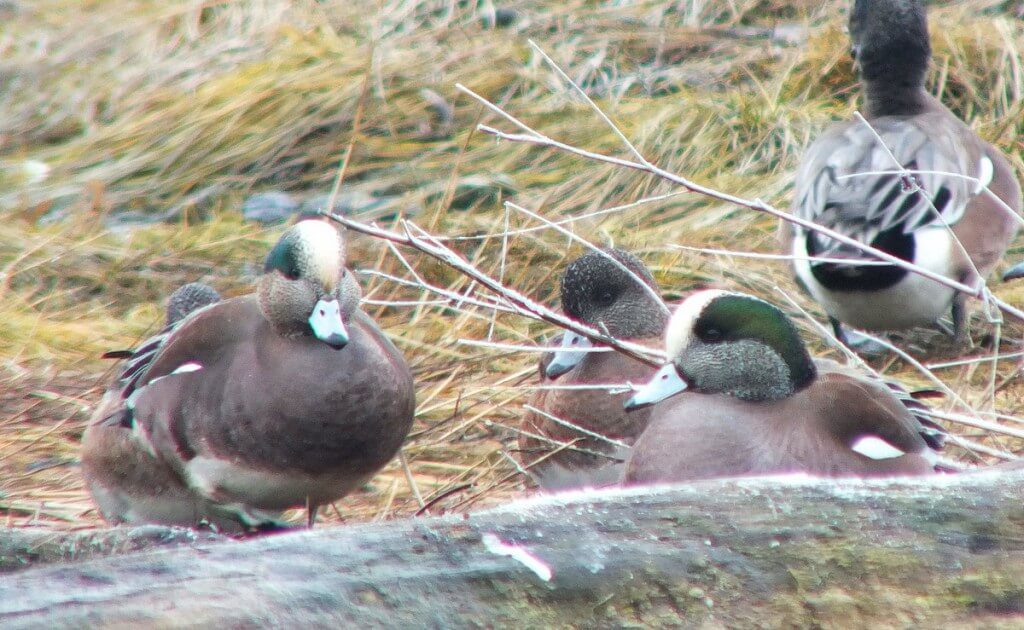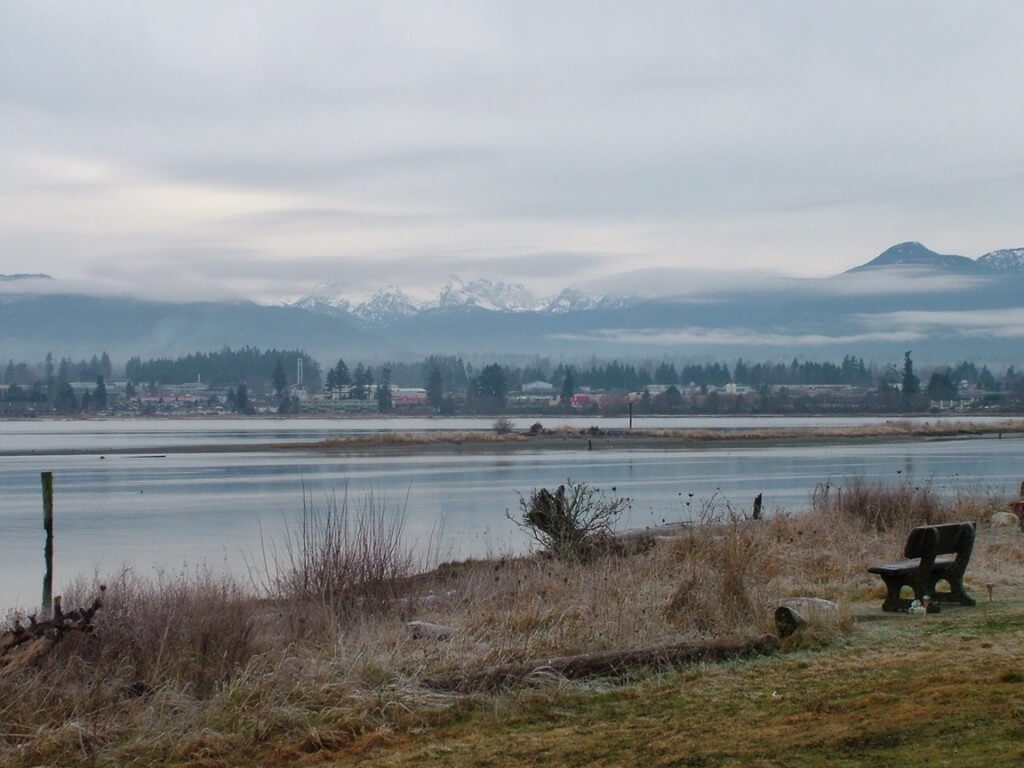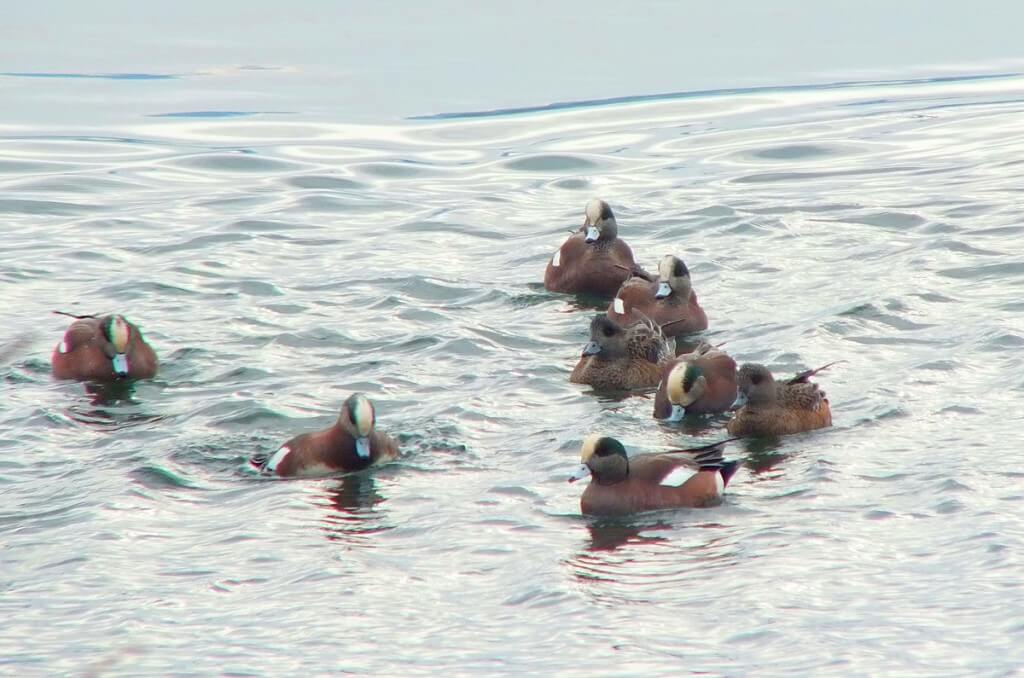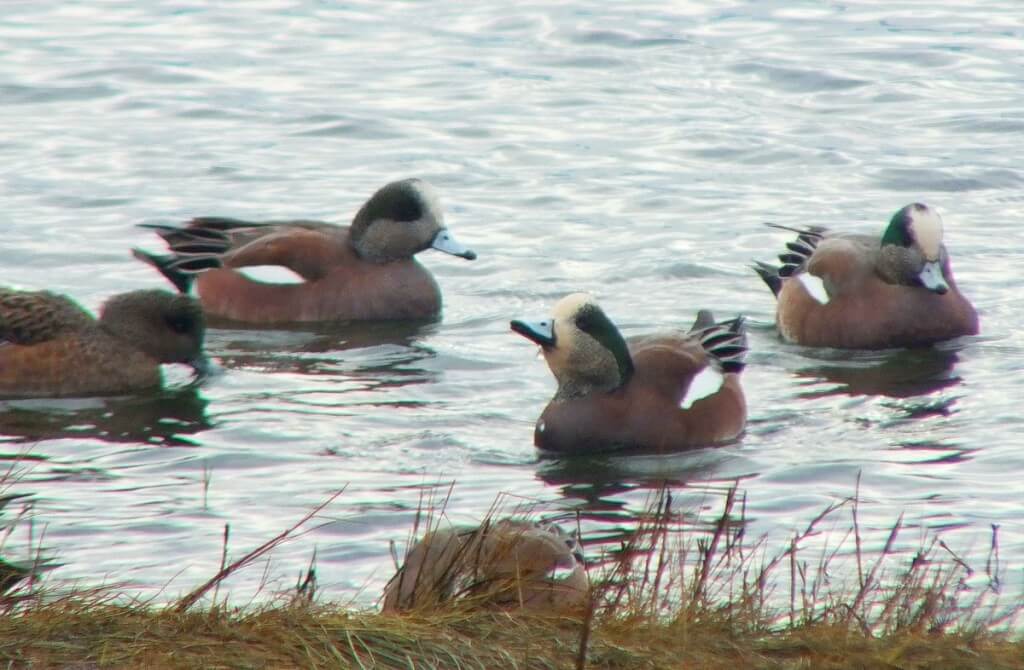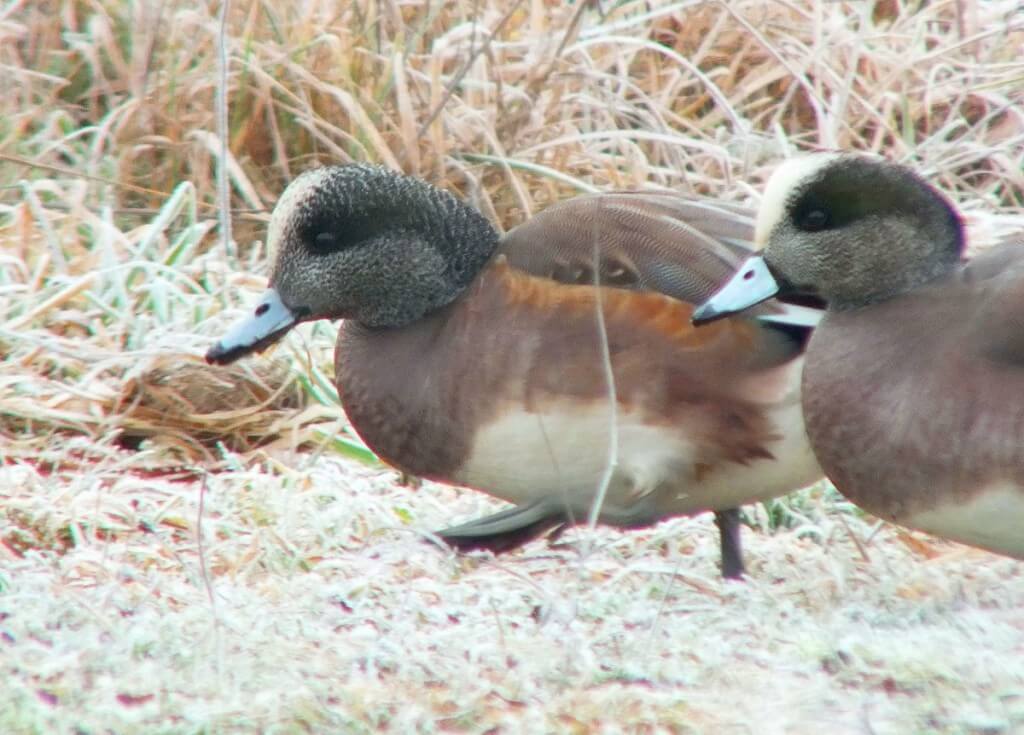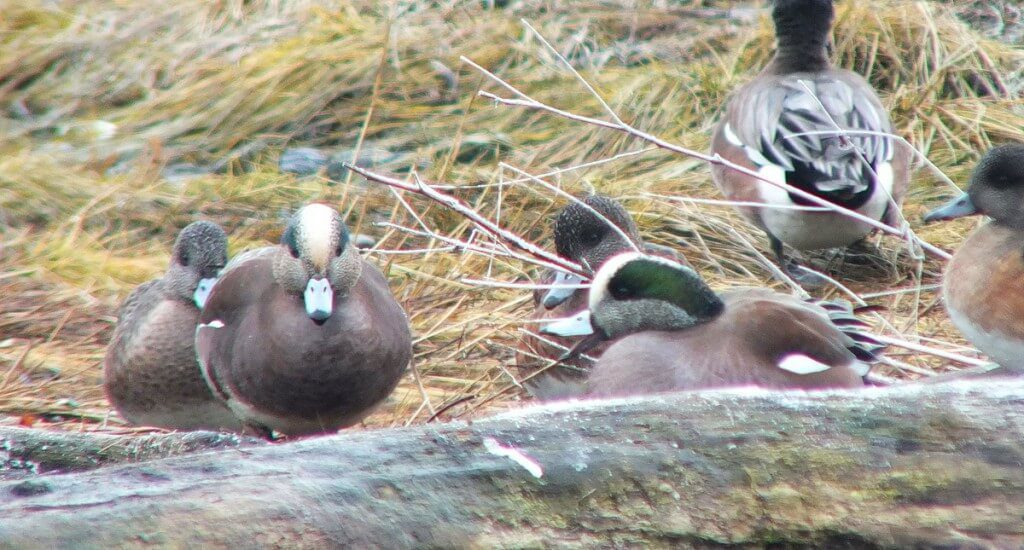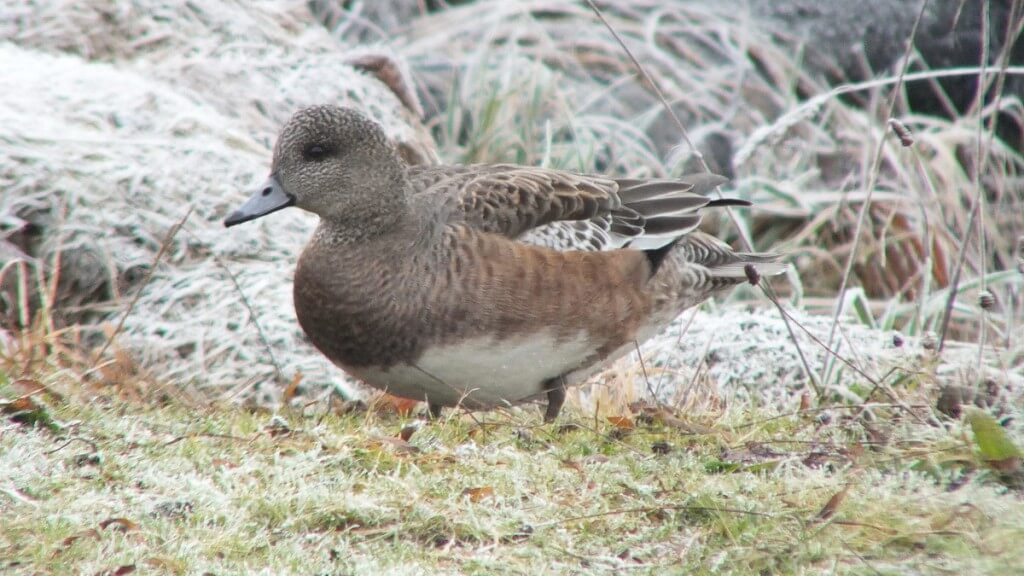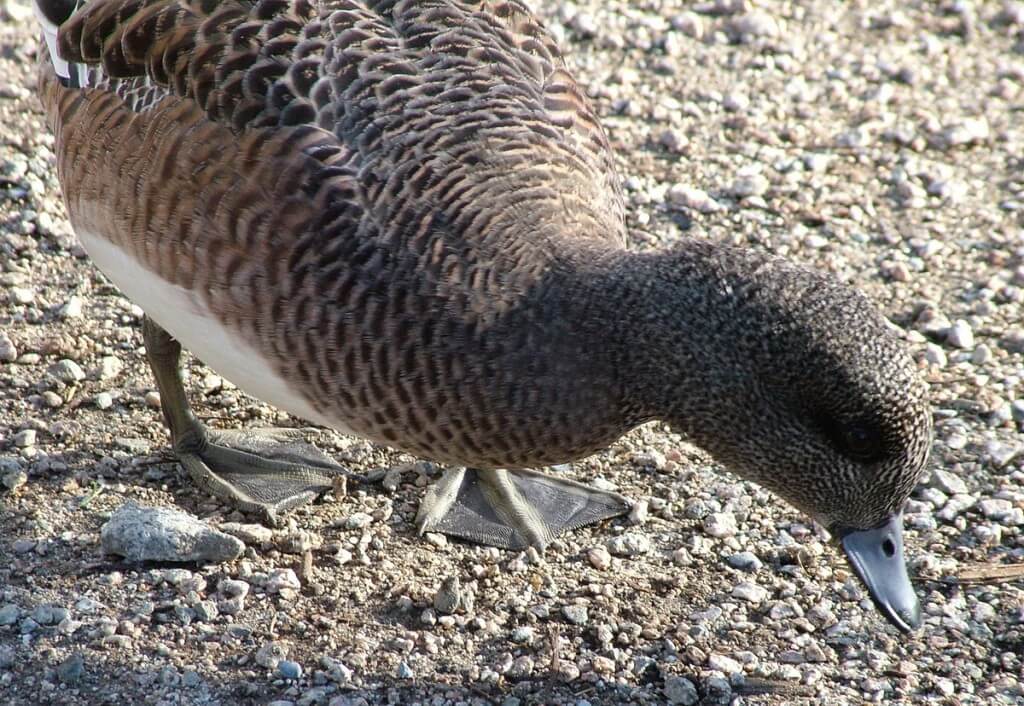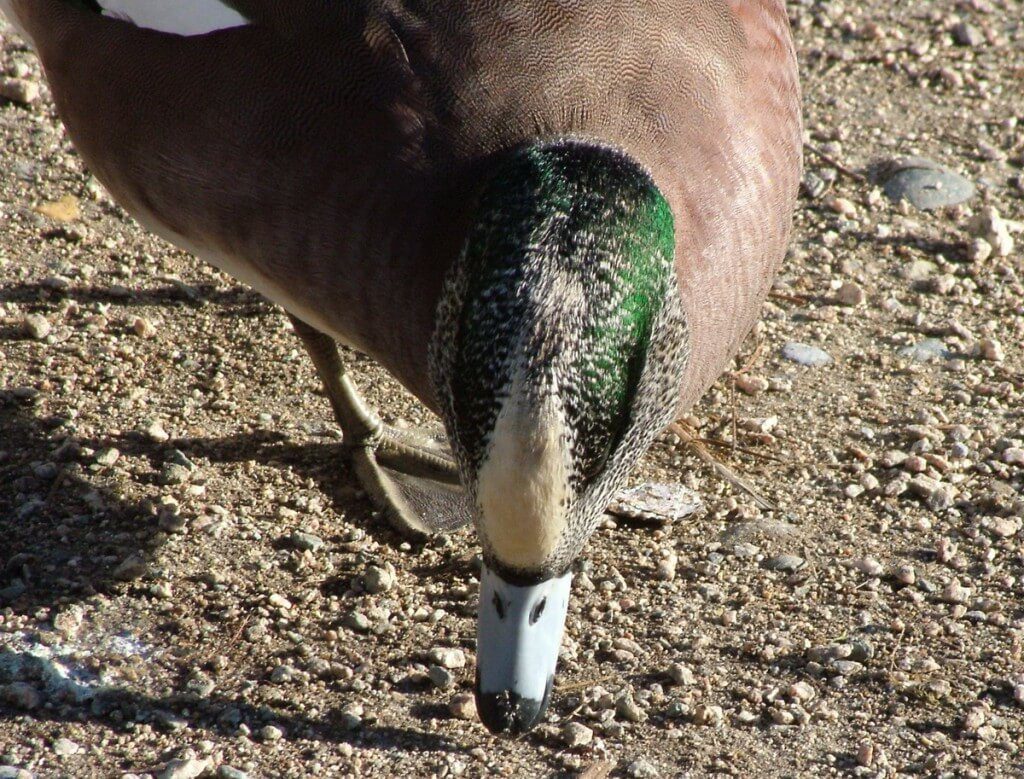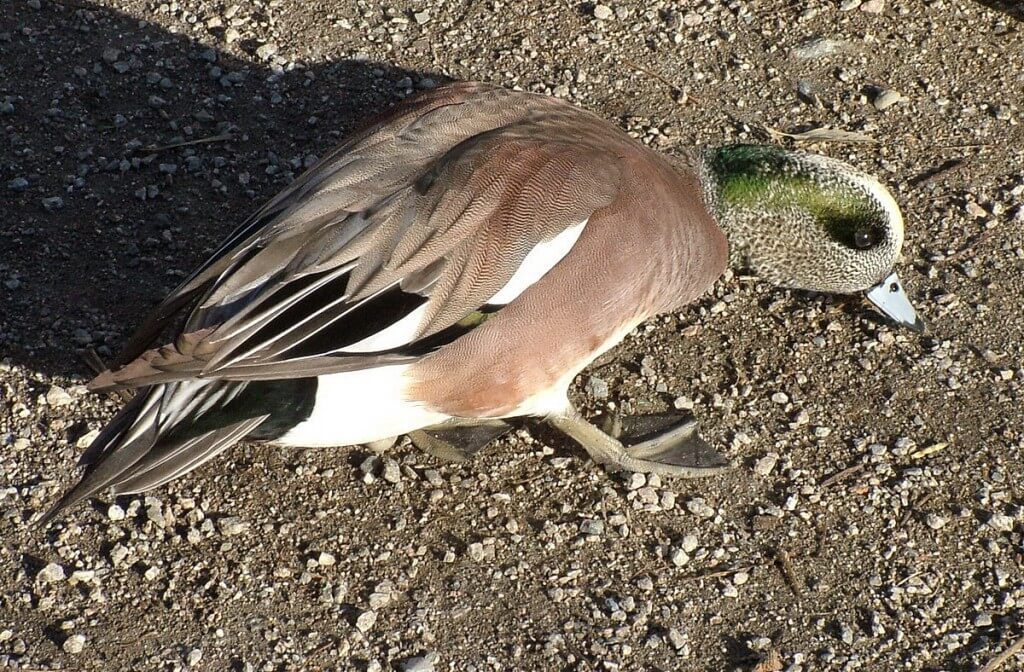Frame To Frame – Bob and Jean
American Wigeon Ducks Along The Shore At Comox
The objective of our drive to Comox from Bowser, British Columbia, was to find and photograph Bald Eagles. As we observed a pair of those magnificent birds of prey just offshore, we became aware of a considerable flock of American Wigeon Ducks scooting along the shore of the Salish Sea right in front of Bob and me.
The morning had started out quite foggy due, in large part, to the chilly nighttime temperatures in combination with morning air that was heavy with moisture. Rain was in the forecast, and already a few sprinkles splattered the windshield of our rental car.
American Wigeons winter in a variety of habitats including freshwater lakes, marshes and rivers. They also can be found wintering in sheltered estuaries and bays, hence their location there on the eastern side of Vancouver Island protected from the full brunt of the Strait of Georgia by Denman Island. The ducks were not inclined to distance themselves from the safety of the shoreline and maintained a compact group.
Back in the 1980s, American Wigeons suffered a bit of a setback in numbers because of a drought on the prairies. The population has recovered well so that they are now the most abundant dabbling ducks in North America. They can be found in every western province, territory and state, although about 40% of the population is found in the northern sections of the boreal forest making it the most northerly breeder amongst dabbling ducks.
As Bob and I looked on, a large group of the American Wigeon Ducks decided to climb up onto the grassy bank next to the water. It afforded us a good view of the ducks, but we had to be mindful to keep our distance. These ducks will take flight if approached. If there was ever a question as to the identification of these ducks, we had only to hear the pleasing mellow whistled notes of the drakes to make positive id.
These ducks used to be called Baldpate because the white crown of the males resembles a man’s bald head. The males exhibit this colouration when in breeding plumage, along with the broad mask of iridescent green feathers from the eye to the nape of the neck.
Both male and female American Wigeons, the drakes and the hens, have a short greyish-blue bill with a black tip as well as blue-grey legs and feet. Their white bellies are only visible when the birds are in flight or on land.
As is the case with most species of ducks, the females are much less showy than the males. The heads of the hens appear grey because of the heavy dusky streaking over a lighter background. The female’s chest and flanks are a warm reddish-brown, and there is a less prominent white wing patch than seen on the males.
Both immature or juvenile American Wigeon Ducks look like the females, and when not in breeding plumage, the drakes closely resemble the hens, as well.
Bob and I also observed several American Wigeons at the George C. Reifel Migratory Bird Sanctuary a few days earlier in the Delta region south of Vancouver. There, the ducks were picking up bits of grain. Normally they forage for leaves and roots of aquatic plants or graze on pasture grasses and sedges in wet meadows. American Wigeons are poor divers, and as a result are often seen feeding on dry land. Because they are the most vegetarian of all dabbling ducks, their fall migration begins before northern marshes begin to freeze over.
I think this photograph shows very well the pinkish-brown shade of the American Wigeon’s flanks and the upper back that is so finely crossed with wavy black lines. The colouring is so delicate and in sharp contrast to the upper and outer tail coverts that are black. Bob and I were lucky to have sunshine the day we visited Reifel.

